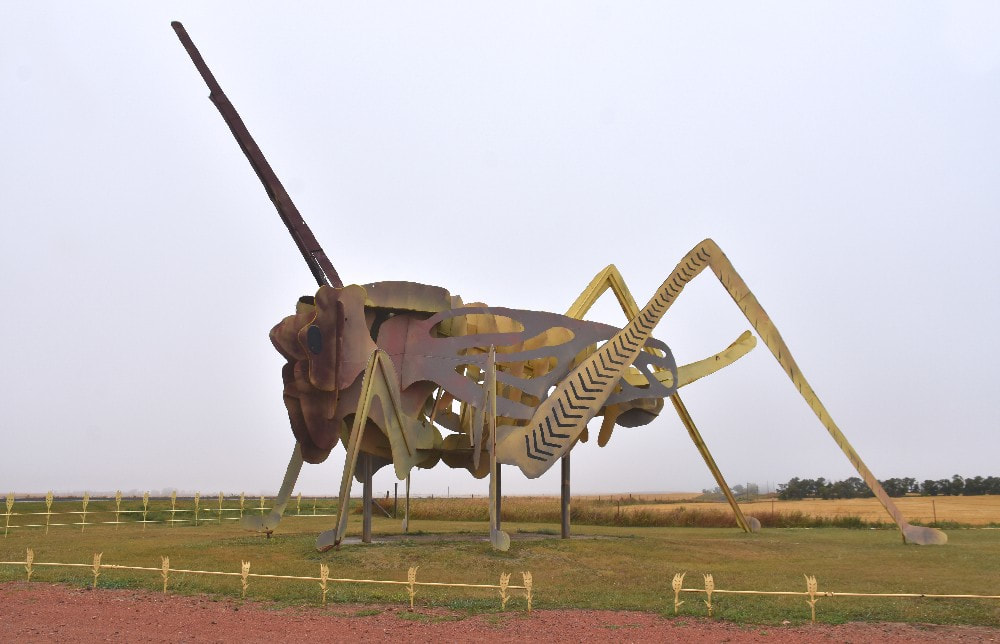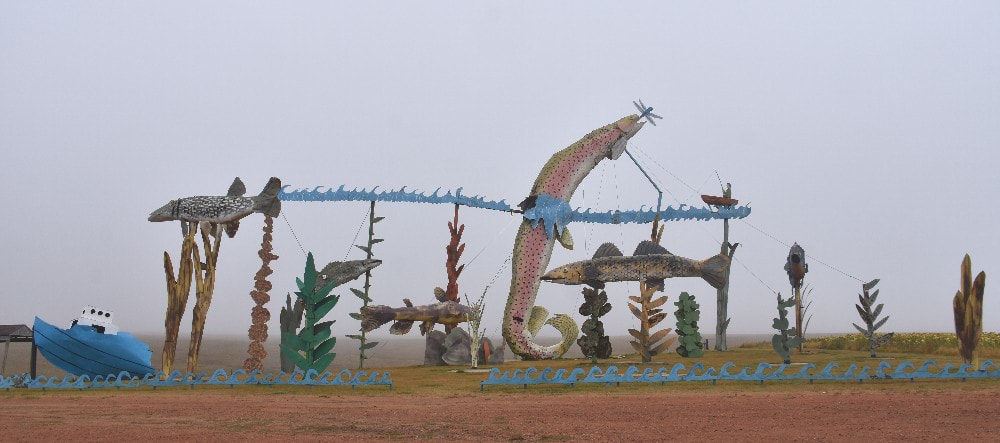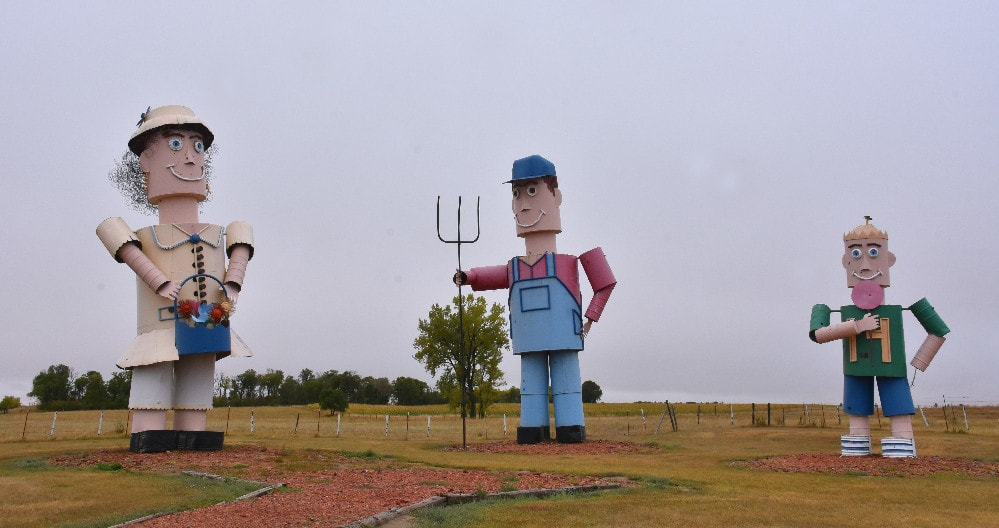|
From the beginning, I have tried to keep HeartWood politically neutral, partly as a haven from all the discord around us, and partly because plenty of other outlets exist for expressing my political views, if I wish to do so. I'm not about to change course here, but I do want to remind readers that we have an important midterm election coming up next week. I encourage you to vote! In case you need more encouragement, here are some other people's thoughts on voting and democracy. Voting is like alchemy—taking an abstract value and breathing life into it. Voting is the expression of our commitment to ourselves, one another, this country and this world. -- Sharon Salzberg Every election is determined by the people who show up. -- Larry Sabato Elections belong to the people. It's their decision. If they decide to turn their back on the fire and burn their behinds, then they will just have to sit on their blisters. -- Abraham Lincoln Democracy cannot succeed unless those who express their choice are prepared to choose wisely. The real safeguard of democracy, therefore, is education. -- Franklin D. Roosevelt Voting is a civic sacrament—the highest responsibility we have as Americans. -- Christine Pelosi As I think of it, democracy isn't like a Sunday suit to be brought out and worn only for parades. It's the kind of a life a decent man leads, it's something to live for and to die for. -- Dalton Trumbo Nobody will ever deprive the American people of the right to vote except the American people themselves and the only way they could do this is by not voting. -- Franklin D. Roosevelt Democracy is the only system capable of reflecting the humanist premise of equilibrium or balance. The key to its secret is the involvement of the citizen. -- John Ralston Saul Not voting is disrespecting the best of what this nation stands for. -- Thomas Hauser Deliberation and debate is the way you stir the soul of our democracy. -- Jesse Jackson Voting is the foundational act that breathes life into the principle of the consent of the governed.
-- DeForest Soaries
18 Comments
 Peter Gibb Peter Gibb I arrived early to nab a good seat for the workshop titled "Discovering Your Story: The Joy of Mindful Writing." On the hour, the instructor, Peter Gibb, walked to the podium. Around the room, people stashed their cell phones, arranged their pens, opened laptops and notebooks. Gibb looked out at the audience, looked down at the podium. Did not speak. He moved his cell phone a fraction of an inch, shuffled some other things in front of him. Remained silent. People shifted in their chairs, rearranged their pens, shot each other quizzical glances. My mind pinged: Has he forgotten what he wants to say? Is this part of the workshop? It is, after all, about mindful writing. Am I supposed to relax and try to be mindful? What the heck is he waiting for? Finally, our speaker spoke: "We have now been in session for one minute." One minute. Huh. One minute of unfilled time felt like an eternity. That was the first lesson in a class that offered a fresh and inspiring take on writing. Immediately following that interminable minute, Gibb challenged us to spend a few more minutes writing about what happened during that miniscule span of time. "It might seem like nothing happened, but actually a lot was going on," he said.  Who knows what might turn up in a mindful minute (Stock photo) Who knows what might turn up in a mindful minute (Stock photo) That there was, judging from the writing people shared after the exercise One person wrote about a fly walking across the table where she sat; another writer detailed his observations of Gibb and the room. From those and other examples, Gibb launched into a discussion of the three typical components of stories, especially memoir: the external story (facts), the internal story (thoughts and feelings), and the personal meaning (what you make of the experience). The richest personal stories, he maintains, include all three levels, and all three can benefit from a mindful approach. "Most of us think what we need to learn is craft, and that's important, but mindful writing has less to do with craft than with awareness and curiosity," Gibb said. "Being aware and curious opens you up to a world that is truly mind-boggling." My mind was boggled, all right, and not only by Gibb's presentation, one of eight sessions I attended at the annual Pacific Northwest Writers' Association (PNWA) conference in Seattle last month. The content ranged from practical advice on the business of writing ("Legal Issues for Writers" and "Build a Writer Platform in 12 Months"), to the finer points of craft ("The Art of the Personal Essay" and "How to Create an Unforgettable Character"). There were panel discussions in which agents and editors gave overviews of the kinds of projects they're acquiring and how best to pitch a project to them. And there were pitch panels (AKA pitch slams)—sort of like speed dating for aspiring authors. At these sessions, a writer has four minutes in which to pitch and connect with an agent or editor. Then a bell rings and the writer must give up his or her seat to the next person waiting in line, and head off to pitch to someone else. All in a noisy, open space. Sounds crazy, but once you get the hang of it, it's kind of fun. Well, a stressful kind of fun.  Christopher Vogler Christopher Vogler Another noteworthy session was a four-hour master class with Christopher Vogler, author of The Writer's Journey. Vogler's approach to storytelling draws from psychology, mythology, physiology, and other sources not typically associated with writing.  Artist's representation of chakras. Artist's representation of chakras. His talk wrapped up with a discussion of chakras, focal points within the body used in a number of ancient meditation practices. Chakras are thought to respond to sound, colors, and vibrations, and can also serve as a guide in writing, Vogler asserts. "Think about what chakras you're trying to awaken in readers," he advised. "Also, what chakra is your main character working from?" I don't know about my readers and characters, but I sensed my chakras were all awake and humming throughout the conference, where there was as much going on outside of the sessions as within them, and PNWA board members, staffers, and volunteers went out of their way to show their support for writers.  FINALIST! (And winner-to-be) (Photo: Ray Pokerwinski) FINALIST! (And winner-to-be) (Photo: Ray Pokerwinski) Having never attended that conference before and having moved away from the Pacific Northwest more than forty years ago, I showed up at the SeaTac Doubletree knowing no other attendees. The folks at the registration table made me feel like part of the gang—even a special part of the gang, by congratulating me on being a finalist in the literary awards contest and making sure I attached my green-and-gold FINALIST ribbon to my name badge. All weekend long, in fact, finalists and winners got VIP treatment, with reserved tables at the awards banquet for all finalists and an after party with agents and editors for the first, second and third-place winners in each category (not to mention the elegant certificates and substantial cash awards). I was thrilled to win first place in the memoir/nonfiction category, but honestly, it seemed to me everyone was a winner at this conference, thanks to PNWA's thoughtful touches. At one station in the registration area, attendees could decorate their badges with colorful stickers corresponding to their writing specialties: a heart for romance, for instance, a pen nib for poetry, a sleuth's magnifying glass for mystery. These visual cues helped writers identify others in their genre and were great conversation starters ("Oh, I see you write historical fiction. What period do you write about, and what kind of historical figures intrigue you?) At a noontime gathering on the first day for first-time conference attendees, PNWA folks offered tips on choosing workshops and panels to attend, connecting with fellow writers, and developing and delivering a pitch. And throughout the weekend, speakers, agents, editors, and PNWA representatives mingled with writers in the hallways and café, willing to chat informally and answer questions. I came away from PNWA with plenty to think about and process. As I looked back at notes from the conference after our return home, I started thinking about all the other writers' conferences, workshops, and retreats I've attended over the years. Curious, I tallied them up and came up with nearly thirty, stretched out over roughly same number of years, from a science writers' workshop on molecular medicine at the University of Michigan to a multimedia storytelling conference at Harvard, to a cozy memoir-writing workshop held in the instructor's living room with blazing fireplace and breaks for tea and homemade muffins. As I looked over the list of writing events, some stood out as exceptional learning experiences, others were notable for the new writing friends I made, the new places I explored, and the insights and inspiration I came away with. There were multi-day conferences with hundreds of attendees jamming the halls and intimate retreats with a handful of writers gathered in someone's home. Some offered opportunities to read my work to an audience or share it in a workshop and have it critiqued. Others were more about sitting back and absorbing information. Not one seemed like a waste of time and money. I have wondered if there ever comes a time in a writer's life when conferences and workshops no longer seem worthwhile. I think I found the answer to that question in the woman who sat next to me at the PNWA editor and agent forums. I'd noticed her earlier, buzzing around the room, greeting old friends and garnering hugs. As we visited before the program began, she told me she had been a finalist a few years earlier and now planned to pitch her memoir, in hopes of securing an agent or publisher. And oh, by the way, she was 97.
If you ever find yourself traveling through North Dakota on I-94, wishing for relief from the tedium of driving and the monotony of the plains, just take Exit 72 for a delightful detour through one man's imagination. Known as the Enchanted Highway, the 32-mile stretch of two-lane county road from Gladstone to Regent showcases a collection of colossal creations by metal sculptor and retired teacher Gary Greff. Gargantuan grasshoppers, humongous fish, gigantic pheasants, the world's largest tin family—you'll find all of these and more if you venture off the interstate. Greff dreamed up the Enchanted Highway nearly three decades ago in an attempt to revitalize his hometown of Regent, then a town of around 200 people. He'd never studied art and didn't know how to weld, but that didn't stop him. Using scrap metal, cast-off oil drums and recycled pipes, Greff just figured things out as he went along, sculpture by sculpture. "He envisioned ten mega-sculptures, each with parking lot, picnic area and playground equipment, spaced every few miles along the road. So far, he has completed six on the Gladstone-to-Regent road, plus an additional sculpture, "Geese in Flight," on a ridge overlooking I-94 at the Gladstone exit. Simply funneling travelers into Regent wasn't enough for Greff, though. He wanted to keep them there long enough to eat, drink, sleep, shop, and hang out a while. So he opened a gift shop, and when the town's school—which Greff had attended as a kid—closed, he and his brother converted the building into a hotel. But not just an ordinary hotel. No, the brothers Greff wanted a hostelry in keeping with the enchantment theme. So, once again with more inspiration than experience, they turned the school into the Enchanted Castle, a 23-room hotel with waterfall walls, suits of armor, and other medieval touches. The inn even has a bar and a restaurant fittingly named Excalibur Steakhouse. Though the hotel, bar, and restaurants have garnered glowing reviews, they haven't yet turned things around for Regent. The population has dwindled to around 170. Yet Greff is undaunted. Ever the optimist, he's working on two new sculptures to grace the hotel grounds and attract more visitors, he told the Dickinson (North Dakota) Press: a 35-foot-tall, sword-wielding knight and a 40-foot tall dragon that will breathe fire every hour. Regular readers of HeartWood know I can never pass up roadside oddities, especially the oversized variety. My patient husband and traveling companion, Ray, knows it, too, and never objects my quests for the quirky. So when I read about the Enchanted Highway in a North Dakota tourism magazine and realized it was right on the route of our recent road trip to Seattle, I declared it a must-see. On the way out to Seattle, we had only enough time to stop at "Geese in Flight," which is currently closed to visitors, but can be viewed from the highway exit. On the way back, however, we spent an entire morning visiting the rest of the sculptures. I was— of course—enchanted! The sculptures were even more immense and intricate than they appear in photos. It was clear, though, that some could benefit from an infusion of cash to maintain or restore them to their original conditions. Greff's project is largely self-funded, and he does all the upkeep, including cutting the grass. He'd hoped gift shop proceeds would cover costs, but so far they haven't, he told the Dickinson Press. Neither, apparently, have the donation stations at the sculpture sites. I only hope some kind of magic materializes to provide Greff with the means to continue and care for his work. It's a testament to the vision and perseverance of one big-time dreamer and an inspiration to all who dare to aim high. As Greff summed it up in an article on a North Dakota tourism website, "You've got a dream. Live that dream. Don't hesitate. If I can do it, a person who didn't know how to weld and didn't have an art class, if I can go out and build 110-foot metal sculptures, I think you can do whatever you put your mind to."
|
Written from the heart,
from the heart of the woods Read the introduction to HeartWood here.
Available now!Author
Nan Sanders Pokerwinski, a former journalist, writes memoir and personal essays, makes collages and likes to play outside. She lives in West Michigan with her husband, Ray. Archives
April 2022
Categories
All
|




































 RSS Feed
RSS Feed